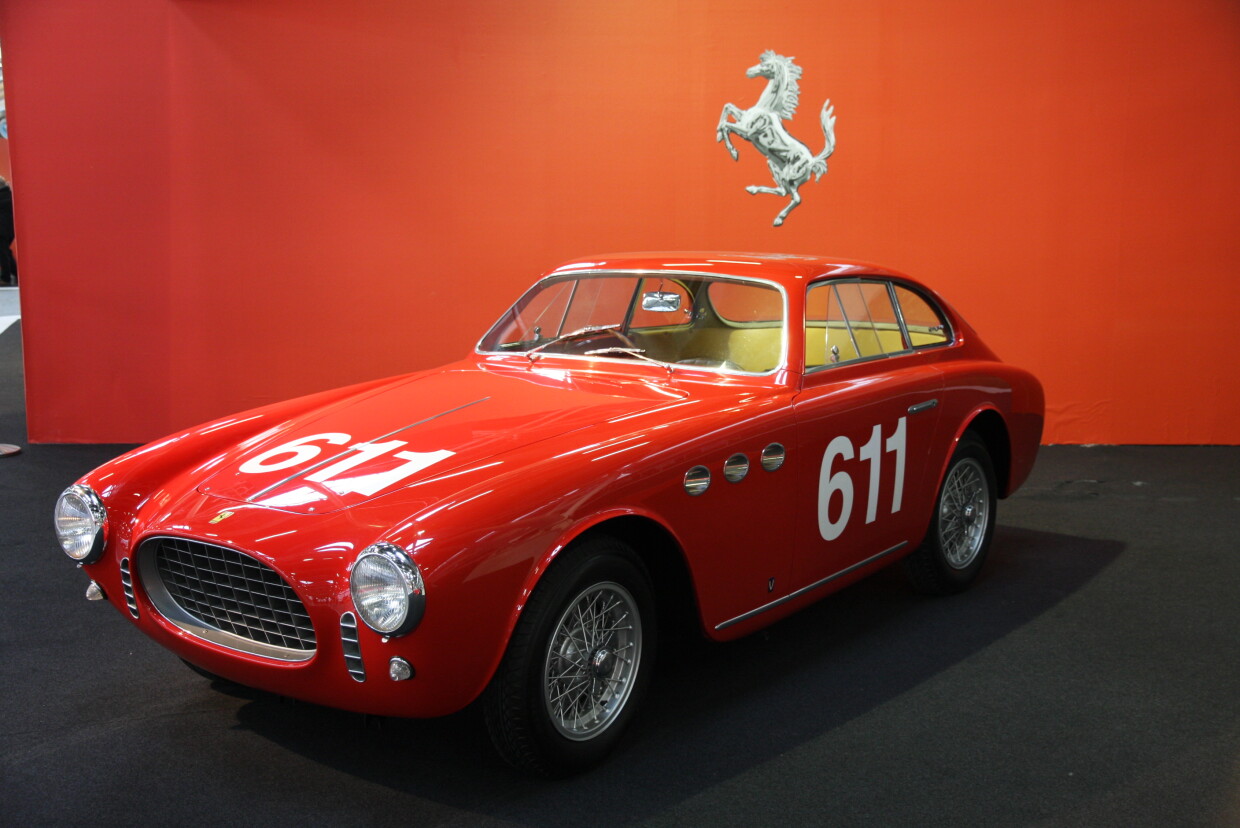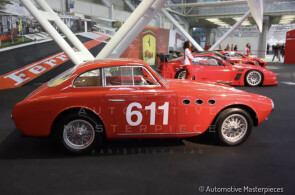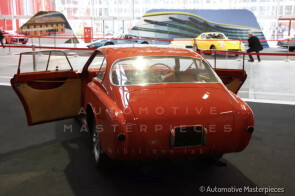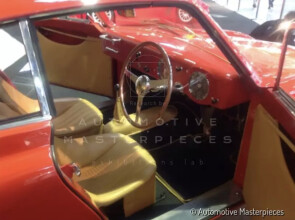
1952 Ferrari 166 millemiglia berlinetta
ON/OFF
Why am I an Automotive Masterpiece?
1948 is considered the first true racing season for Ferrari, marked by the debut of the 2-liter version of the 12-cylinder engine, destined for a new model to be used both in the sports category and in Formula Two. It was the beginning of a successful and long-lasting series of cars, the "Tipo 166", which ensured Ferrari's prestige thanks to the first significant international successes. Designed to compete in the 2-liter class, it was an evolution of the 159 S, which in turn was a direct evolution of the first 125, and it debuted as a winner, achieving major successes that year. The 166’s chassis and suspensions had minor changes compared to previous models; it was a dedicated tubular structure designed by Ferrari and produced by Gilco. The car’s engine was the well-tested V12 designed by Gioacchino Colombo, brought to 1995.02 cc to reach the limit of the 2-liter class. Thanks to its 140 hp, it was favored by many gentlemen drivers of the time, while its flexibility and robustness allowed the 166 to be used competitively in any kind of race. As per Ferrari’s use, the car’s name corresponded to the displacement of the single cylinders. In 1953, the 166's built for competition were upgraded with a 9.5:1 compression ratio, individual intakes with three Weber 32 IF/4C carburetors, a new gearbox with synchronized 3rd and 4th gears, and twin fuel pumps. This allowed the 166/53 to produce 160 hp and to stay competitive in the 2-liter class. However, despite these improvements, the successes were limited due to the more competitive Maseratis.
To pay tribute to the first great success at the 1948 Mille Miglia, Ferrari wanted to produce a car unequivocally for competition, for the sports category; so, it upgraded the 166 Sport into the 166 millemiglia (aka MM). The first example, in the Touring barchetta version, was presented on September 15, 1948, at the Salone dell’Automobile in Torino. It was a special occasion: it seems that the term "barchetta" referring to a car was born from a comment by Gianni Agnelli who, observing the Ferrari 166 MM at the show, exclaimed: "But this is not a car; it’s a little boat!" The name was picked up by Giovanni Canestrini and proposed to designate the open version of the 166 MM and, from then on, all cars with this type of bodywork. The millemiglia, like any other 166, sat on the Gilco dedicated tubular chassis and was fitted with the 2-liter V12, in this case capable of 140 hp at 6600 rpm: the exceptional power-to-weight ratio gave the car the qualities of an excellent racing car. In its first racing season, in 1949, it won with Luigi Chinetti in Paris, Le Mans (the first win for the company on the Circuit) and at the 24 Hours of Spa; while at the Mille Miglia, it qualified first and second overall with Biondetti and Bonetto. The 166 millemiglia ensured Ferrari's prestige more than any other previous model, scoring many of Ferrari's first international victories and establishing the company as a great manufacturer of sports cars. It is believed that a total of 48 millemiglia cars were built in two series, both in berlinetta and barchetta versions: 35 were from the first series and 13 from the (/53) second series. Most of the first series were aluminum-bodied by Carrozzeria Touring, with the Superleggera system: 25 barchetta and 6 berlinetta. A few others were bodied by Vignale, Zagato, Campana, and an example designed by Dino Ferrari realized by Scaglietti. In 1953, a second version of Ferrari’s 166 Mille Miglia (MM) was produced, and it was again Ferrari’s sports car of choice in the 2-liter class; named MM/53, it was employed with renewed success in sports races. The renewed car used an upgraded engine with new 4-barrel Weber 32 IF4C carburetors, new heads, and roller cams. Along with other tweaks, 160 bhp were reached at 7,200 rpm. The chassis and running gear were similar to the first model. Most of the 166 MM/53 were bodied by Carrozzeria Vignale: 5 barchetta and 3 Berlinetta, while the remaining cars were quite special: two barchetta bodied by Ferrari/Carrozzeria Autodromo, and a barchetta Touring. Abarth, at the request of the Scuderia Guastalla, made a Berlinetta with a body consisting of a series of detachable aluminum panels, weighting only 54 kg. The last one was created by Pinin Farina: an elegant two-tone berlinetta, similar to a scaled-down 250 MM.
This chassis is one of four Vignale bodied in a “berlinetta” shape. It’s peculiar for its three ovoid portholes on the flanks. All of Vignale's Ferraris are made up of many body panels that are formed on the chassis underneath it. The body was built in aluminum and almost all the design come from Giovanni Michelotti. He worked closely with Alfredo Vignale, one of the newest coachbuilders in Turin, at the time. The two had worked together before at Stabilimenti Farina. The basis is the chassis of the second series of Ferrari 166 millemiglia born in 1953, also known as 166 MM/53. The car was sold new to the French racing driver Francois Picard and was originally painted “French” blue. During the season 1953 this car won the 12 Heures internationales d’Hyères and came second at the first 12 Heures internationales de Reims. In 1954 the car raced in Italy in uphill races like the Trento-Bondone and the Trieste-Opicina. It is yet to be confirmed its entry at the 1957 Mille Miglia. The car was restored in early 90s by the specialist Dino Cognolato and is now part of the Museo Ferrari.




